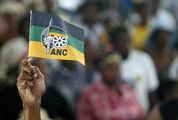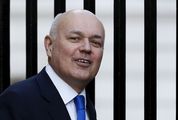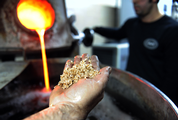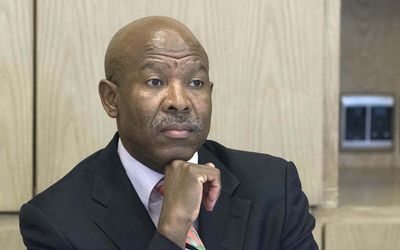THE Reserve Bank for the first time on Thursday flagged political risks to the rand, as it raised interest rates yet again.
Though the rand strengthened on Thursday because of global sentiment and a weaker dollar, political factors earlier this week knocked it over the R16/$ level after the Hawks threatened Finance Minister Pravin Gordhan with legal action.
It was also hit by Deputy Finance Minister Mcebisi Jonas’s disclosure that he had been offered the top job by the controversial Gupta family before Nhlanhla Nene’s firing.
Although the monetary policy committee (MPC) did not deliberate on political developments, it noted the negative effect politics had on the rand this week, Bank governor Lesetja Kganyago said.
"Of course we can do with more favourable developments to the extent that they would be useful for the stabilisation of the currency, because the volatility of the currency remains a concern for us," he said.
Mr Kganyago also confirmed that members of the MPC would meet with rating agency Moody’s, which is reviewing SA for a downgrade.
The Bank increased the repo rate by 25 basis points to 7%, despite a downward revision to its economic growth and inflation outlooks.
The weak rand and rising food prices remained concerns and were the main reasons behind the rate hike, which comes on the back of a 50 basis point hike in January.
Despite an improvement in the Bank’s inflation outlook, rising food prices could stoke inflation higher than anticipated.
"A more protracted drought, combined with a weaker exchange rate and restocking of herds, may keep food inflation elevated for a longer period than currently forecast," Mr Kganyago said. Oil rising from about $40/barrel would drive up inflation, the Bank said.
The six-member MPC was split evenly between a hike and leaving the rate unchanged, and only after "further deliberations" settled on a 25 basis point increase.
ETM Analytics economist Manisha Morar said the deadlock indicated that it was not an easy decision, given the poor growth outlook.
"The rand remains a notable risk to inflation," she said.
Though higher rates would cause pain, especially for highly indebted households, in the medium term they would foster growth based more on production than consumption, she said.
The Bank could still raise rates by 25 basis points in the third quarter and another 25 in the fourth quarter, lifting the repo rate to 7.5% at the end of the year as it continued to respond to the inflation risks and tried to manage inflation expectations, HSBC Securities SA economist David Faulkner said.
The Bank revised its economic growth forecast for this year down to 0.8% from 0.9% before, and next year’s forecast to 1.4% from 1.6% previously. Potential output growth remained unchanged at 1.5%, rising to 1.8% by 2018.
Weaker global growth, lower investment spending and lacklustre spending in the local economy were reasons for the revision.
The Bank’s inflation outlook improved. It now sees inflation averaging 6.6% this year from 6.8% forecast previously, while that for next year was projected at 6.4% from 7%. Inflation is forecast to average 5.5% in 2018. It is seen peaking at 7.3% in the fourth quarter of this year, down from 7.8%, and to return within the 3%-6% target band at 5.5% during the fourth quarter of next year.
These changes were due in part to higher interest rates, a slightly better exchange rate assumption, and downward revisions to the international oil price and electricity tariffs.
Inflation expectations for this year and the next remained unchanged at 6.2% in the current quarter (January to March), while those for 2018 came in at 6%, according to a Bureau for Economic Research survey.
The inflation expectations of analysts rose significantly, while those of business people and trade unions moderated for both years.
Core inflation, which strips out food, electricity and petrol, is forecast to average 6.2% this year, slightly higher than the 6% projected previously. Core inflation is, however, expected to improve in the next two years.

























Change: 1.19%
Change: 1.36%
Change: 2.19%
Change: 1.49%
Change: -0.77%
Data supplied by Profile Data
Change: -0.19%
Change: 0.69%
Change: 1.19%
Change: 0.00%
Change: 0.44%
Data supplied by Profile Data
Change: 0.62%
Change: 0.61%
Change: 0.23%
Change: 0.52%
Change: 0.12%
Data supplied by Profile Data
Change: -0.21%
Change: -1.22%
Change: -0.69%
Change: -0.51%
Change: 0.07%
Data supplied by Profile Data